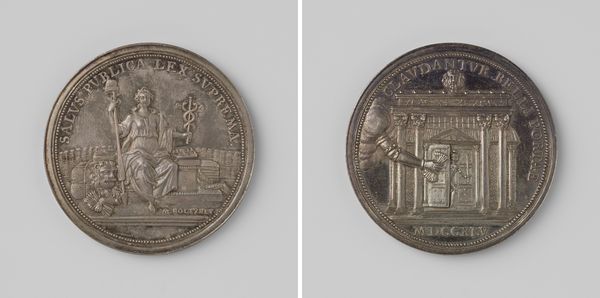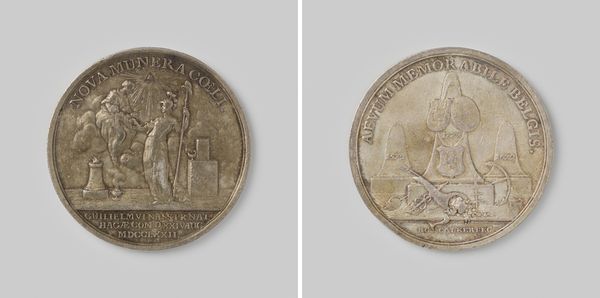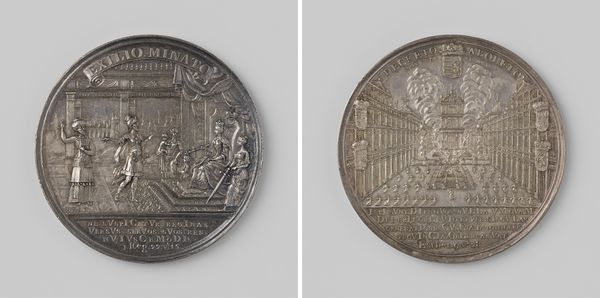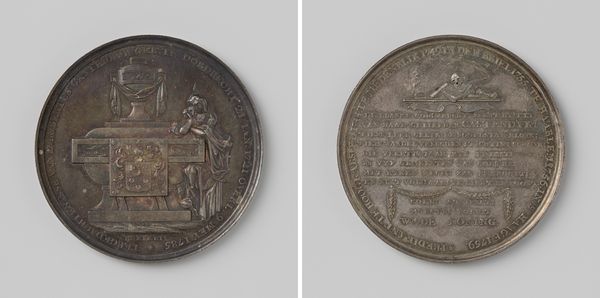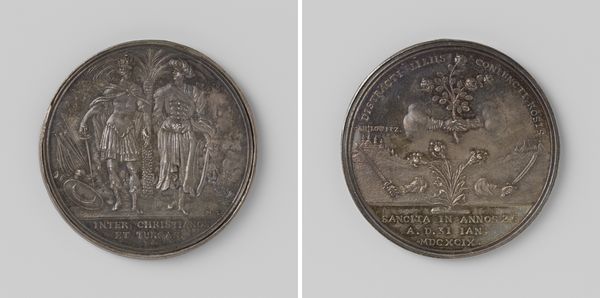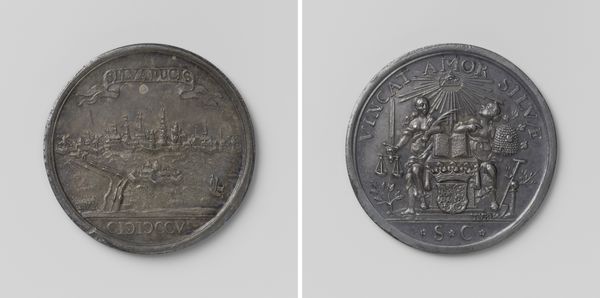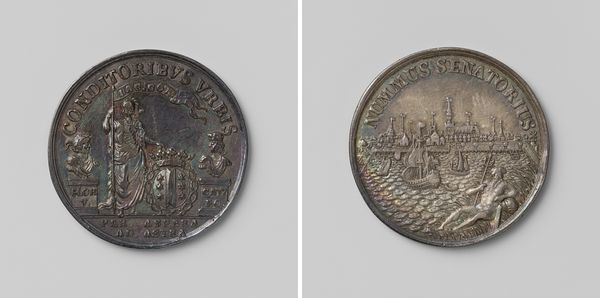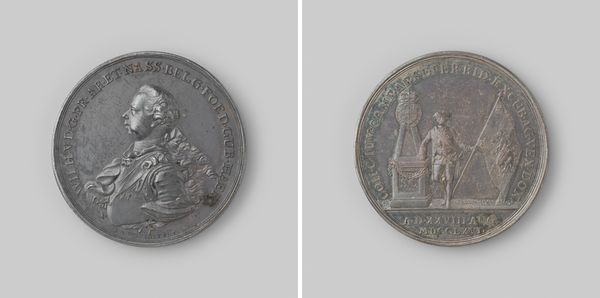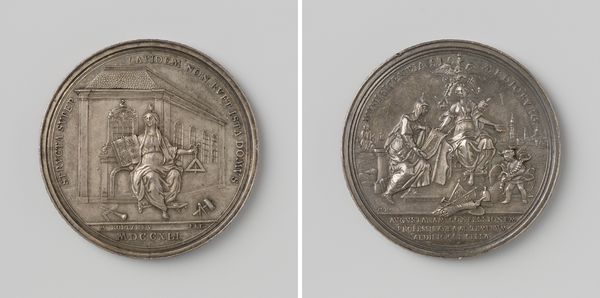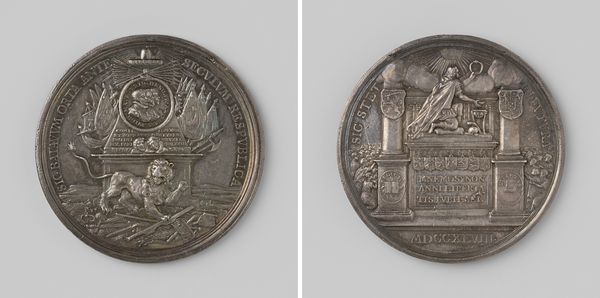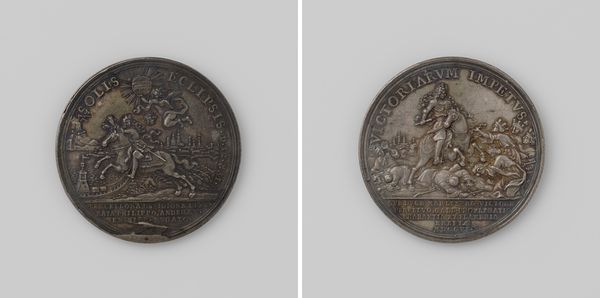
print, metal, relief
#
neoclacissism
# print
#
metal
#
relief
#
history-painting
Dimensions: diameter 2.8 cm, weight 5.62 gr
Copyright: Rijks Museum: Open Domain
Editor: So, this commemorative medal by Carel Frederik Konsé from 1778 celebrates the centennial of the Lutheran Diaconal Orphanage in Amsterdam. It's tiny, metallic, and packed with symbolism. I’m struck by the two very different sides – one showing allegorical figures and the other a rather grand building. What can you tell me about this piece in its historical context? Curator: Well, commemorative medals like this were often commissioned by institutions to bolster their public image. Consider the context: the Enlightenment was in full swing. Orphanages, like the Lutheran Diaconie Weeshuis, were not just charitable institutions but visible symbols of civic virtue and social order. Does the imagery strike you as particularly… didactic? Editor: Didactic? I can definitely see the orphanage building representing stability, maybe progress. The figures on the other side… they’re harder for me to pin down. Is it trying to legitimize itself? Curator: Exactly. The neoclassical style, with its emphasis on rational order, was deliberately employed to project authority and respectability. Orphanages needed benefactors, so such imagery functioned as visual PR. This wasn’t just art for art's sake, but carefully constructed messaging targeting a specific social stratum. The medal acts as a form of miniature architecture, reflecting the public ambitions of its patrons. How do you interpret its role as propaganda, of sorts? Editor: It's like a portable advertisement almost… I hadn’t considered the pressure on these institutions to publicly validate their existence, to prove their worth through artistic symbols like this. Curator: Precisely. By studying art through its social and institutional framework, we reveal layers of meaning and intent far beyond aesthetics alone. It becomes a primary source document revealing values of a time period. Editor: This makes me see these objects as important historical documents, shaping opinion. Thank you, this has totally reframed how I view this medal.
Comments
No comments
Be the first to comment and join the conversation on the ultimate creative platform.
